
Recently we reviewed a Devin Sportscar Special in the process of being built. It was owned by Jim Collins who has had a long history of building and restoring specials throughout his life. Click here to read the recent story about his acquisition and build of this Devin Sports Car Special.
When I was getting to know Jim, he shared with me that he had built a special years early using a Byers CR90 body, and as soon as he mentioned that I knew what car he was referring to – a beautifully built special on an MGA chassis. This very car was covered in an excellent article written by Jim Donnelly of Hemmings Sports & Exotic Car Magazine in March 2008.
Thanks to the generosity of Daniel Strohl of Hemmings Motor Magazine, we have permission to run this article and “tell the tale” of this beautiful special as well. There’s not many Byers CR90’s out there gang, and this is one of the best. Take some time to check out the article below and enjoy the eye candy – all courtesy of Hemmings.
Fabricated Fantasy
Hemmings Sports & Exotic Car: March 2008
By Jim Donnelly
Composite materials are as commonly found in racing cars today as, well, drivers. Deep gray carbon fiber, and its derivatives, have made it from Formula 1 almost all the way to beater stock cars, seemingly by way of some skunk works in the high California desert, ringed by mean-looking Air Force security troops with M-16s and Rottweilers.
The real history however, dates from not long after an Owens-Illinois researcher named Dale Kleist had a Doctor Watson moment in the 1930s. He was trying to adhere a couple of glass blocks with heat when a blast of air covered him with skinny glass filaments. Once the filaments were mated to plastic, a new industry was born.
Come war’s end, inventor types quickly learned that everything from boats to bathtubs could be simply, and cheaply, molded from the novel material, fiberglass. Same for sports cars. Not the Corvette, however, but instead the curvy kind of bodies associated with performance two-seaters.
The average repatriated GI or swabbo, a cog in the American post-war industrial steamroller, couldn’t hope to buy a for-real Ferrari 250 MM Vignale Spyder, but thanks to scores (more or less) of industrious types with one-car garages, he could bolt together something that looked like one. This racing special, riding on a chassis rebodied, indirectly, by a young guy named Jim Byers, is one of them.
Its clothing is the last known Byers fiberglass body to be discovered in unmounted condition, found on a bicoastal trip that could have ended with it lost amid the weeds, who knows where. It’s now in the California collection of Jim Weissenborn, who stretches the Byers MGA Special, as it’s known, in the hotpot of West Coast vintage racing. That’s only its latest campaign.
The saga of this modified MGA dates back about 15 years, when the Byers body was located in Connecticut as a swap meet scalp-scratcher. The overall tale begins much earlier, in the Fifties, when the South Bay area of Los Angeles was a hive of local commerce, whose workers included Byers himself.
The history of cottage-industry bodyworks runs from A (Ace Auto Services) to Z (Ziero), with dozens in between. You could count the output of some such operations on one hand. That’s the problem with researching them, which Geoffrey Hacker, of Tampa, Florida, has been doing for a long time. Sports specials with fiberglass bodies have been asterisked when it comes to legitimately historic, but Hacker has been trying to change that, and intends to publish his co-authored kit-body industry retrospective, Forgotten Fiberglass, next year.
He’s taken his research far enough to have located Byers’ first employee. Hacker told us that the firm began in 1956 as Fiber-Craft in El Segundo, California, where Byers was in partnership with a gent named Dick Jones. About a year later, the company was renamed J.E. Byers, and Jones went off to Colorado to produce another buy-your-own body, the Meteor.
By way of Byers’ long-ago hireling, Hacker learned that unlike most competitors, Byers did his own rough sketches of sports cars, upon which his molding bucks were based, as opposed to lifting a mold off an existing car of foreign manufacture. The Byers cars still generate a strong whiff of carrozzeria inspiration. The first was the SR-100, with a 100-inch wheelbase, about 25 of which were produced.
One was built in late 1956 for Road & Track publisher John R. Bond, who put it on the magazine’s cover and queried, “World’s most beautiful sports car?” It used a triple-Stromberg small-block Chevrolet, an H.R.G. tube axle with Houdaille 50/50 shocks up front, and an Invicta Black Prince independent rear with a transverse leaf spring, à la Triumph Spitfire and mid-year Corvette. Perhaps a half-dozen SR-100s exist today; one of the best-known is vintage raced by John Furlow of Carrollton, Texas, riding on a 1954 Kurtis-Kraft 500 KK frame powered by a 1954 De Soto 291-cu.in. Hemi V-8.
The SR-100, however, was aimed squarely at buyers who wanted to make their new Corvettes look like a Pinin Farina creation. Later, the SR-100 molds ended up in the hands of Kellison Engineering in Folsom, California. Almost as an afterthought, Byers then introduced, for a few heartbeats’ worth of time, a smaller body he called the CR-90, the number referring to its target wheelbase. Weighing 75 pounds, it was immediately notable for its molded-in driver’s headrest.
The CR-90 started at an attractive $375, but in the mob scene of new ‘glass molders selling relatively homogenous body designs–think Meyers Manx–the CR-90 never sparked. Maybe a dozen were built, Hacker thinks. By 1957, the CR-90 moved intact to the catalog of Fiberglass Trends, not far from Byers in Gardena, California, which went on to lay up some of the earliest molded Funny Car shells in drag racing. Byers’ other products included speedboats, drag boats, antenna globes for weather radars, and even some molded whale effigies for Marineland of the Pacific. He died in the early 1980s.
Besides Weissenborn’s, Hacker knows of two other cars with authentic Byers-produced CR-90 bodywork. Given their numbers, an undiscovered body almost never surfaces, but this one did, about 20 years ago at a flea market held in conjunction with the annual Fall Festival at Lime Rock Park in Connecticut. One of the scroungers in attendance was Jim Collins, of Shelburne, Vermont, an accomplished collector of sporting seldom-seens, including a Siata 300 BC.
Lashed atop a vendor’s long-wheelbase Dodge cargo van, almost backed up against a row of porta-johns, was a plain, unfinished fiberglass body for a sports car. What caught his eye was the pair of streamlined headrests flowing back from the seating area, although he quickly noticed that one had been glassed on, while the driver’s was molded in place. The hood had been cut open, but the lid was included. Uppermost among his observations, though, was the complete absence of any provision for doors. Collins was sufficiently cognizant to key it as a likely Byers CR-90. Two hundred bucks was enough to bring it home.
“I knew it wasn’t a Devin, but it was something similar to one, although with some distinct features of its own,” Collins reminisced. “I know that Devin had a body with a headrest, but this wasn’t it. What caught my eye was the treatment of the tail, the way the rear fenders came up to a ridge, kind of a sharp edge or razor edge at the top of the fenders, sort of like a Maserati Mistral. Plus the Devin had doors, which this body, or any Byers CR-90, did not.”
A key indicator to the lineage of any CR-90 body is the nature of its fiberglass work. Byers, like Devin, his principal competition at the time, was insistent on hand-laying his bodies in their molds. That, Collins told us, was evidenced by the lack of significant seams, and by the precisely thicker material in the area surrounding the cockpit opening, by approximately an eighth of an inch.
Hacker said the quickest way to spot a post-Byers CR-90 (or for that matter, an SR-100) is to look for evidence that a chopper gun was used in its production, which uses compressed air to spray fixed-length strands of glass fibers onto a piece of work from a roving of raw ‘glass fed into the gun. It saves a lot of time over hand-laying. Speaking of Byers, it’s a sometime misconception that his molds, at least for the CR-90, went to the producers of the contemporaneous Victress body in North Hollywood, California. Hacker said that following their stint at Fiberglass Trends, the CR-90 molds simply disappeared.
Even for a dandelion-common chassis choice like Collins’ 1959 MGA, a disc-brake chassis without the twin-cam, which remains beneath the Byers body today, the body swap is not a drop-on proposition. Using a Sawzall, he made two longitudinal incisions and excised six inches of width, gelling the halves together. He raced the Byers MGA at Mont Tremblant, Lime Rock and Loudon before selling it.
The special passed through several hands, including those of Bob Wertley, who vintage-campaigned it all over the East Coast. In 2003, it came into the hands of Weissenborn, from Redwood City, California, who had raced in SCCA national meets going back to the early 1960s. The engine, originally built by MWE, was pulled and rebuilt by Frank D’Aquanno at D’Motorsports in Monterey, California.
The original 1959 MGA pushrod 1500 has been fist-punched out to a hearty 1,800cc. Weberized and compression-boosted, with Carrillo rods, it is throwing an estimated 130hp worth of heat. With more topical Dayton wires usually standing in for its longtime Minilites, the Byers MGA is a starring player in the chorus line of M.G.s that usually crowd today’s vintage paddocks.
“We lowered the suspension a little bit to make it grip better, and today it’s an almost perfect car,” Weissenborn told us. “The car is marvelous to drive. I’ve raced M.G.s all my life, practically, and when we redid the Byers, we really tried to make it as correct or original to 1959, equipment-wise, as we could, like the fact that we still use lever shocks on it, old Armstrongs that are rebuilt by White Post Restorations in Virginia.
Since the car has a Byers body, I get to run it in a different class than all the MGAs and the other production cars from M.G. I’m in there with the Elva Mk Is and Lotus 23s, and even Devin V-8s, so you get to run with a little more diverse group of cars. With Frank’s engine build, and the APT cam we’re running, which is about a 3/4-race grind, we’re getting our peak power between about 3,500 and 6,500 rpm, as opposed to some of the guys who are twisting these MGA engines to 8,000 rpm. It’s a very balanced car.
“I’ll bet that between me and the other owners, this car has probably been on every road course in the United States over the past 20 years.”
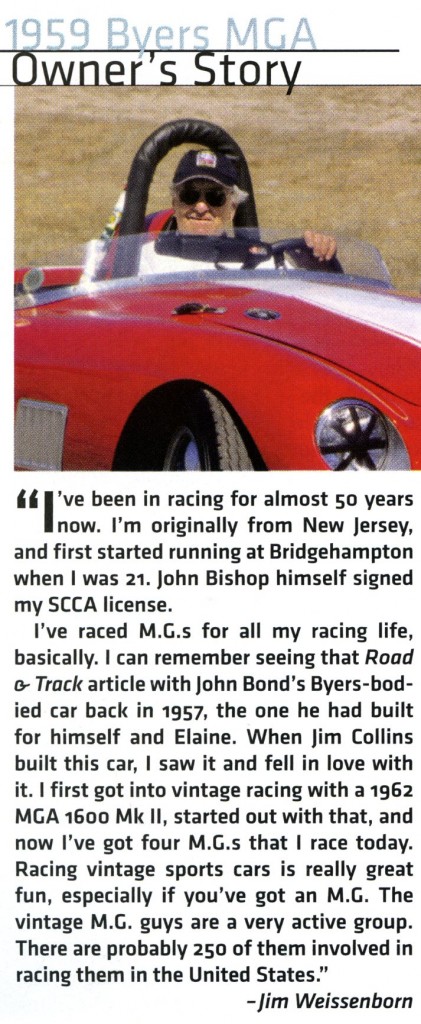 Owner’s Story: Jim Weissenborn
Owner’s Story: Jim Weissenborn
“I’ve been in racing for almost 50 years now. I’m originally from New Jersey, and first started running at Bridgehampton when I was 21. John Bishop himself signed my SCCA license.
I’ve raced M.G.s for all my racing life, basically. I can remember seeing that Road & Track article with John Bond’s Byers-bodied car back in 1957, the one he had built for himself and Elaine. When Jim Collins built this car, I saw it and fell in love with it.
I first got into vintage racing with a 1962 MGA 1600 Mk II, started out with that, and now I’ve got four M.G.s that I race today. Racing vintage sports cars is really great fun, especially if you’ve got an M.G. The vintage M.G. guys are a very active group. There are probably 250 of them involved in racing them in the United States.”
-Jim Weissenborn
Summary:
Thanks again to Daniel Strohl and Hemmings for allowing us to share the article here at Forgotten Fiberglass. Click here to view the online version of this story via Hemmings own website.
As mentioned in the article, the current owner of the car is Jim Weissenborn who is having a ball vintage racing it at every opportunity, and every few months I receive new pictures from enthusiasts across the country showing Weissenborn’s CR90 “at speed” and looking great.
Maybe Jim Weissenborn and/or Jim Collins will jump in with some comments at the end of our story. Be on the lookout – hopefully they’ll have some great new information to share about this very special….”Special.”
Hope you enjoyed the story, and until next time…
Glass on gang…
Geoff
——————————————————————-
Click on the Images Below to View Larger Pictures
——————————————————————-
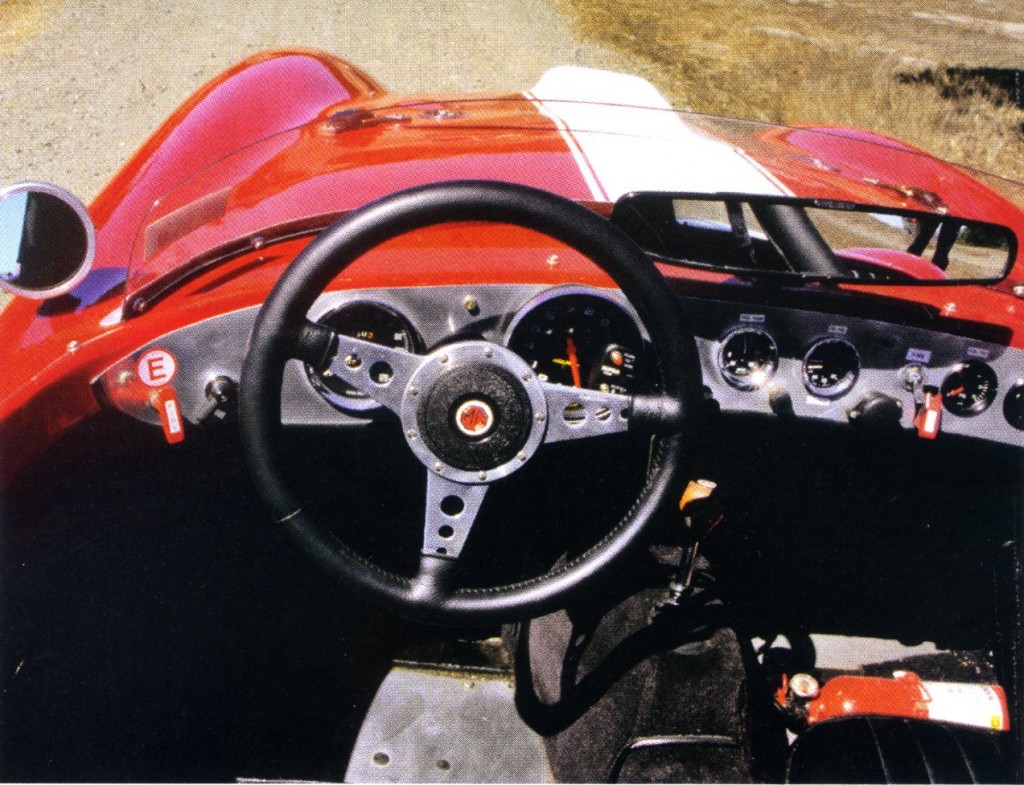
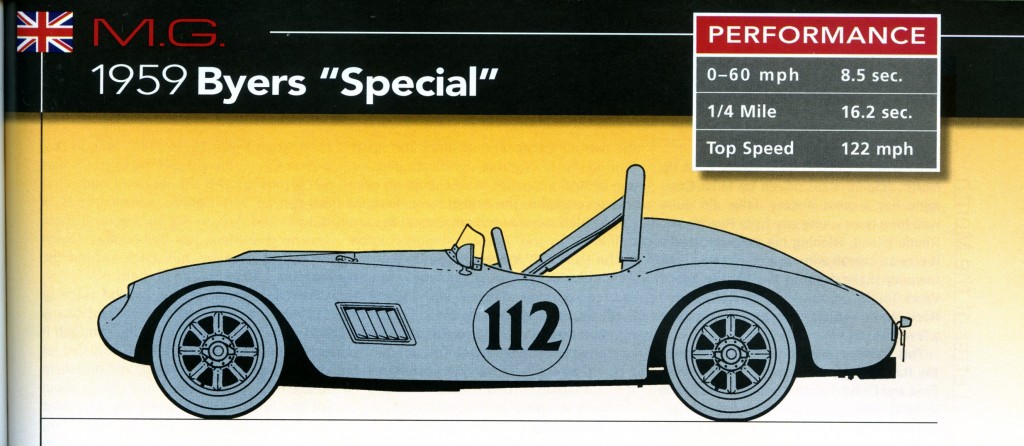
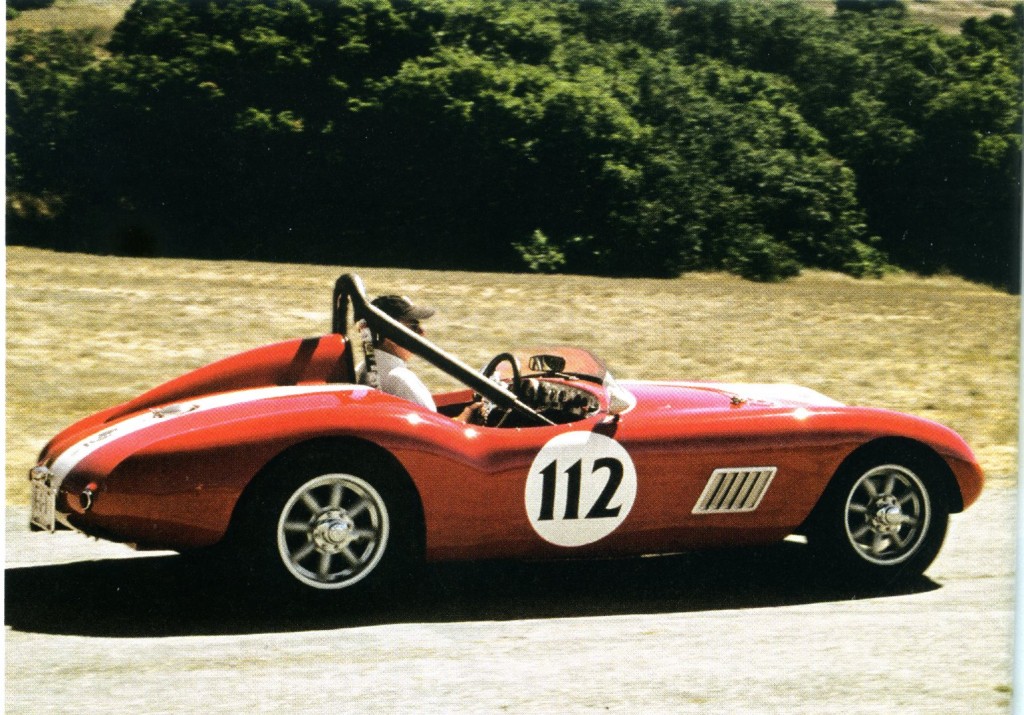
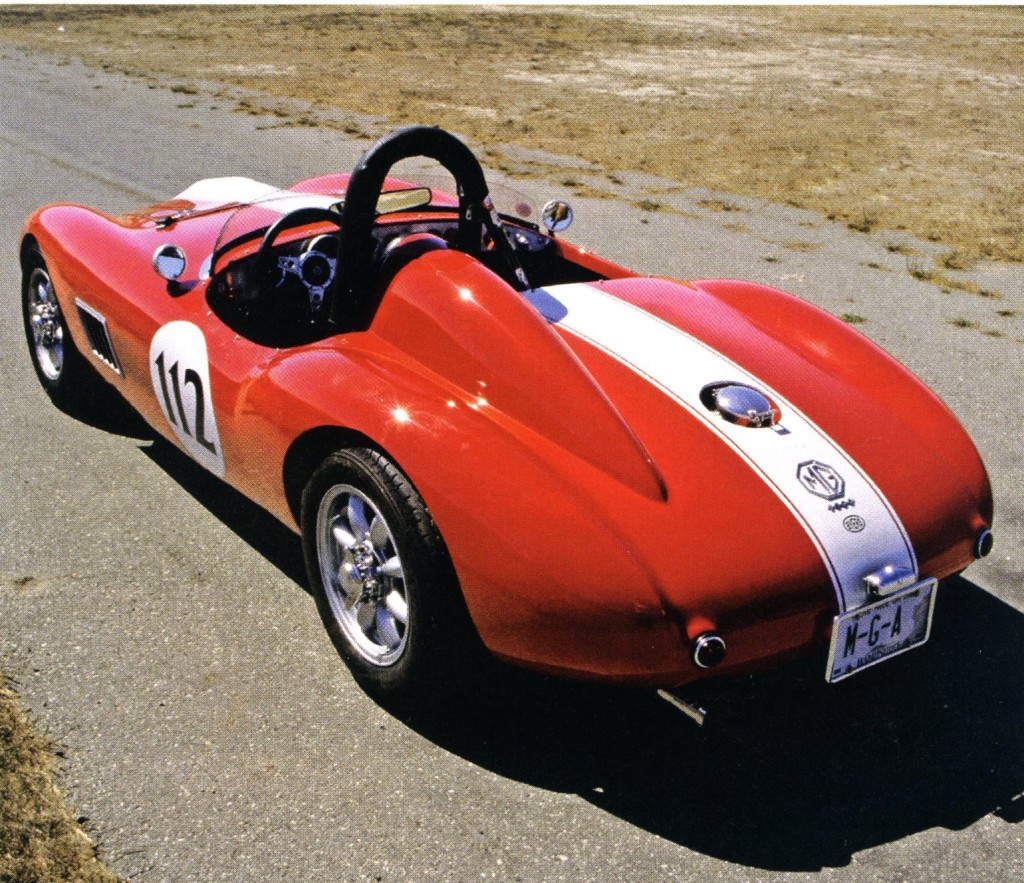
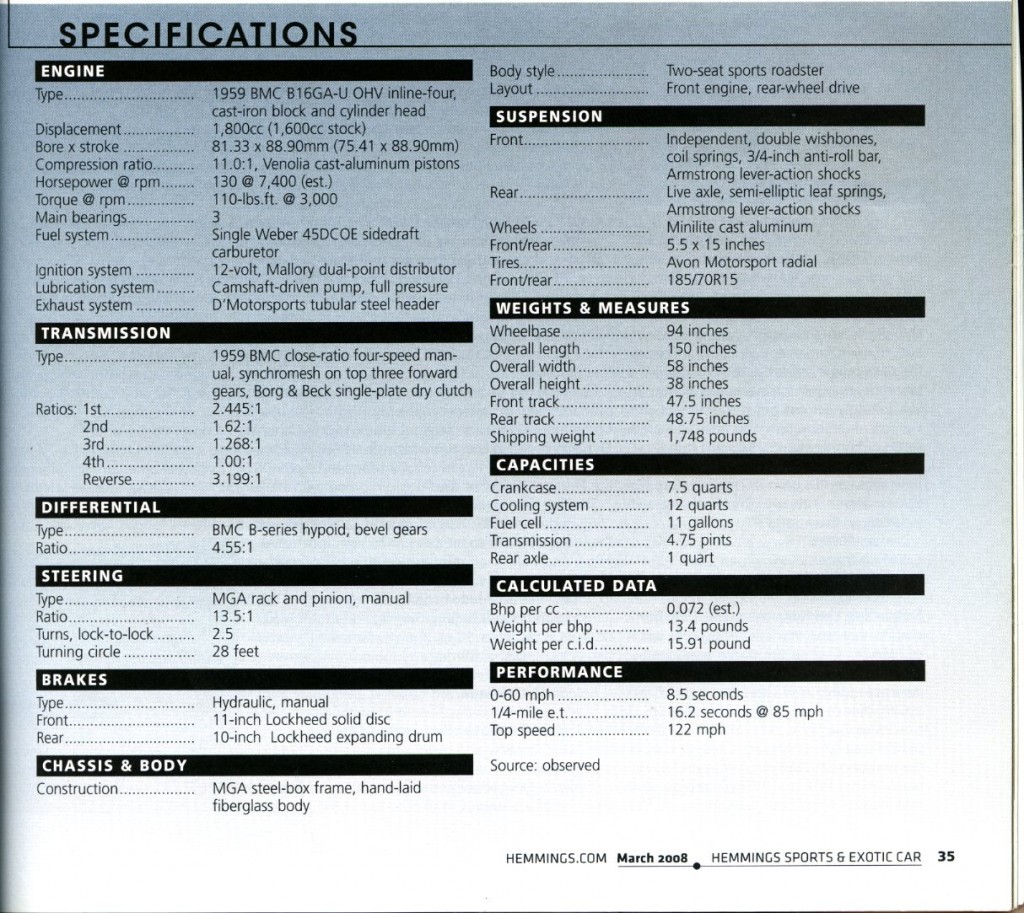
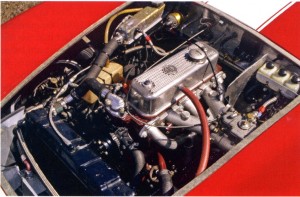


















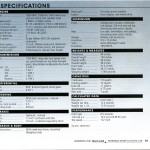

name is Jack Marsh and when I turned 16 My brother, Lindel had returned his 49 mgtc (right hand drive) to st==the family home in Ventura – CA. I had finished 1st year of Auto shop and beguun to tinker with this 4 cyl car. due to right hand drive. the body was fitted with two head rests and was a sharp looker. After I got it to run, it went every where with this kid. High school. Santa Barbra, Los Angeles. Lake Arrowhead. Atone point, I advertised it in Hemming for sale and a fellow called in Ventura who said he had a MGTC engine and wanted to buy the car. I had just returned from Lake Arrowhead and my engine had begun to run poorly. I called the guy in Ventura and bought his engine. Set up new rings and bearings and swapped the engines, it ran great. it corned like the tires had glue on them! I am currently trying to find the lic# to trace the car.
My father built and raced that exact Byers Type 90. The picture is hanging on my wall. He is flying a checkered flag after a first place finish at Le Circuit Mont-Tremblant September 22, 2003.
Number 112
William Stevens
Byers 1600 MGA Special
06/16/17 After all these years ,and having a lot of great people’s names associated with this car ,I thought I’d finally like to get listed in the lineage of owners. My name is Dave Furiani , and I used to own a British parts business called “Very British” in upstate NY. I was the guy who hauled the body to Lime rock on top of my puke yellow ,Dodge Maxi Van . Jim Collins can attest to this. One of the funnier lines that came out of transporting was from the toll taker on the Taconic Parkway when I got off. “I don’t know if I should charge you for one car ,or two ” I actually traded a large electric winch ,used in an elevator , for the shell . After that ,everything Jim spoke about ,happened . As I recall , he saw me pulling in from a distance , and was waiting for me as I got out of the van . He did a great job with it , and I’m glad to see it still gets a lot of attention .
My father built and raced this car!! William Stevens #112. I kid you not his poster is on my wall. We also owned a Devin, 2 mgas and a bug eye sprite at the time.
I have to admit that I should of keep this car. I love that jim is taking such good care of a great car.
Jim Collins
What a spectacular little race car. Jim Byers was an especially talented designer as evidenced by the continuing admiration expressed today for his designs dating to the mid-1950s. What is particularly noteworthy, his designs were original and not mere copies or knockoffs of other well known cars, even if he did borrow some of the styling cues from the best of the era.
Having been inspired by the R&T February, 1957 cover car (a Byers SR-100), I built my own SR-100 to completion starting in 1957. Here is a link to the recent Forgotten Fiberglass story on that car: https://www.undiscoveredclassics.com/?p=15852
Curiously, my car was powered by a 1957 Triumph TR 3 which was the donor car for much of the build (more on this in a later Forgotten Fiberglass story). Had I been more interested in building a race car rather than a sports car, my choice would have clearly been a Byers SR-90, since I preferred it to the more widely known Devins of the time.
I will likely get slammed for this comment… This is probably the nicest thing that ever happened to an MGA, the car is nothing short of stunning. Kudo’s